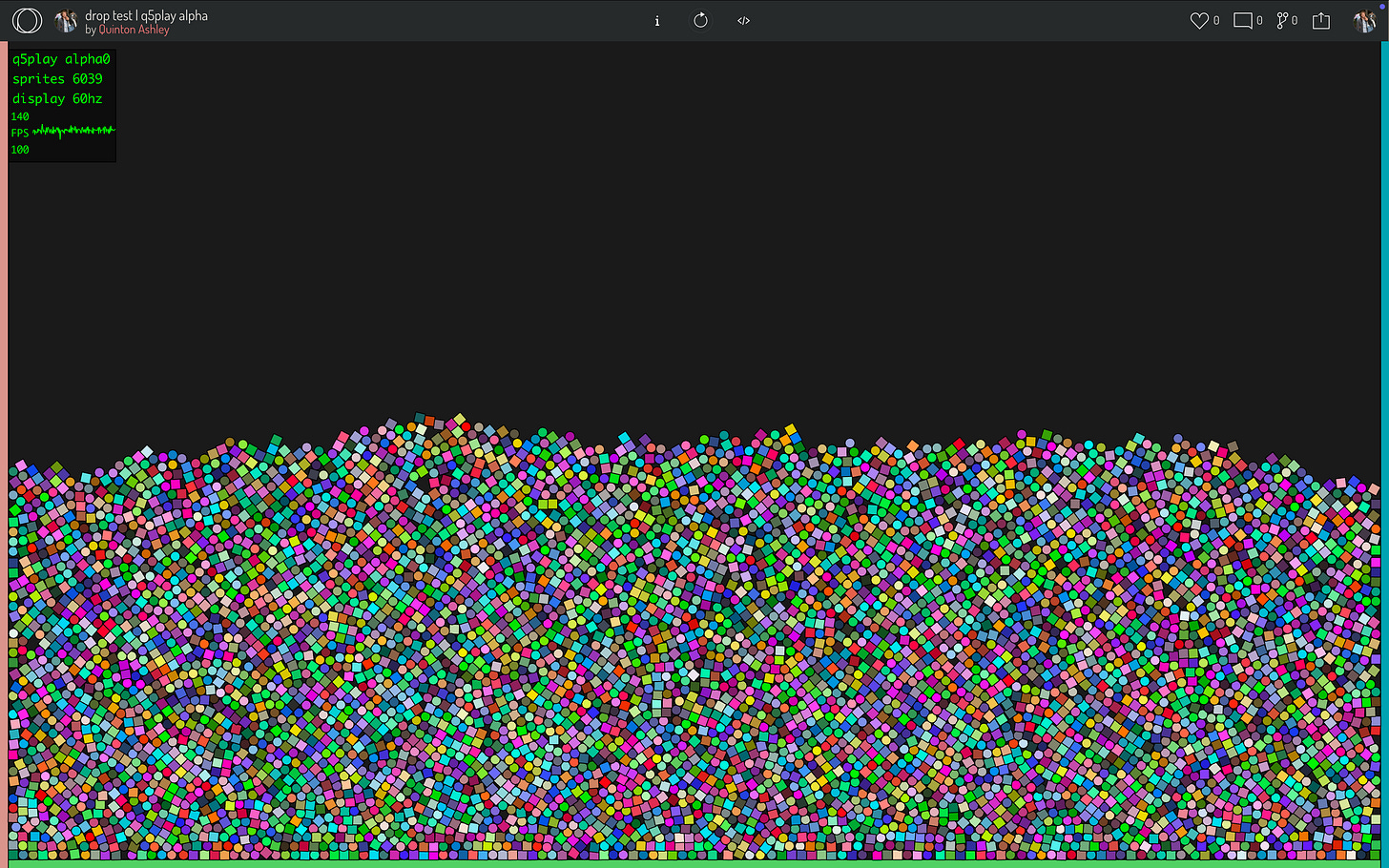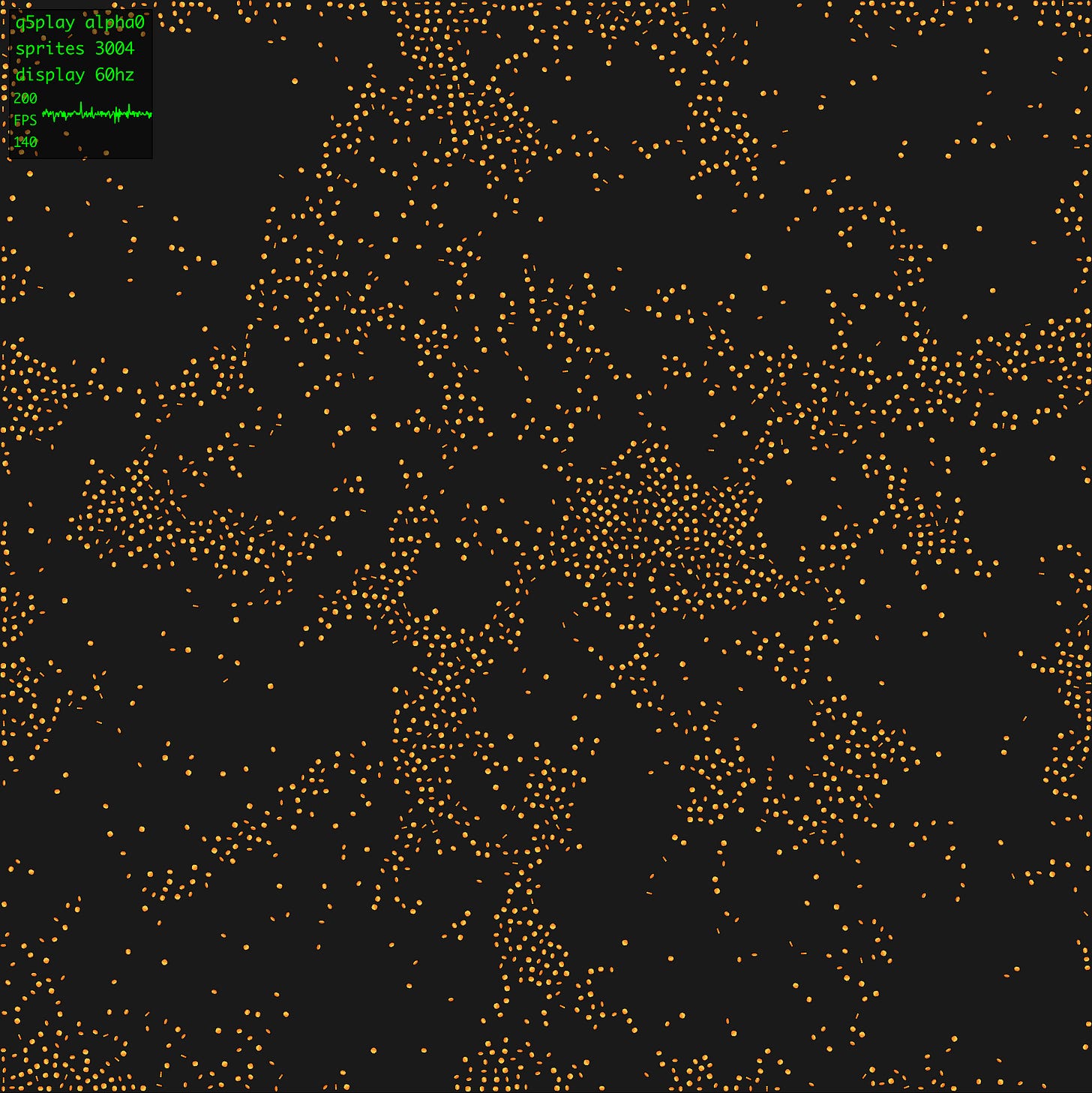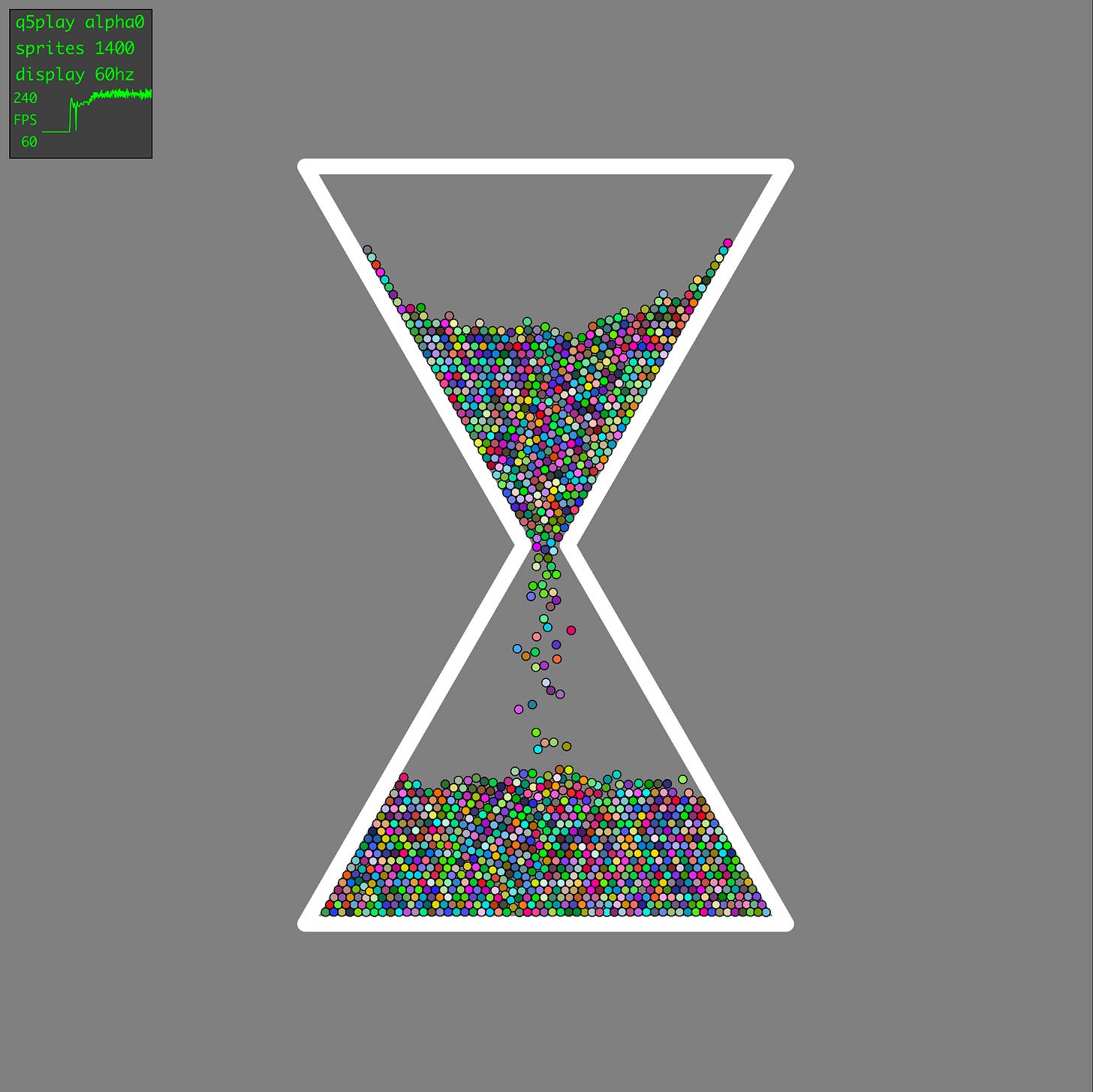q5play alpha0 Demos Available
Take a sneak peak at the level of performance q5play will offer!
This is the first progress update on q5play’s development! I’ve implemented just enough functionality to share some fun physics demos. 😅
the world can have gravity
sprites can be moved and rotated
sprites can have images and animations
the new q5play performance profiler graphs FPS
For the best performance, use Google Chrome or Edge to run these demos. They’re intended to use WebGPU, which is not currently available in other web browsers.
Today’s a great day for fans of big piles! Try out the drop test that I referenced in the previous article.
How many sprites can your computer handle?! Let me know in the comments below or on the p5play discord.
On my computer, in these initial tests q5play is performing over 10x faster than p5play.
Next up, the coins demo features free floating coins that you can move in a random direction with a click or tap.
Making `Ani` objects more lightweight and faster to draw in q5play really paid off.
The hourglass demo was a bit of challenge to re-create in q5play, since Box2D v3 only supports static chain shapes. I got some advice on how to achieve the rotating hourglass using an alternative approach from lucysir and zandy on the Box2D discord and even the man himself chimed in: Erin Catto!
When q5play users attempt to create a dynamic or kinematic chain, behind the scenes the vertices are used to create a bunch of capsules. I’ll offer users the ability to change their width in the Sprite constructor.
In this example, the hourglass lines needed to be thick, to prevent fast moving sand from slipping out. Note that rarely some sand is still able to escape. I hope to find a fix for that.
In other news, q5play.org is live with a little “Coming soon” landing page.
That’s all for this progress update!
q5play will be the fastest Box2D based game engine on the web. I’m so eager to see what y’all will do with it upon release.





P5 play can’t sign up for reading its wonderful docs, why is it?
Even faster than pixi.js ? Amazing